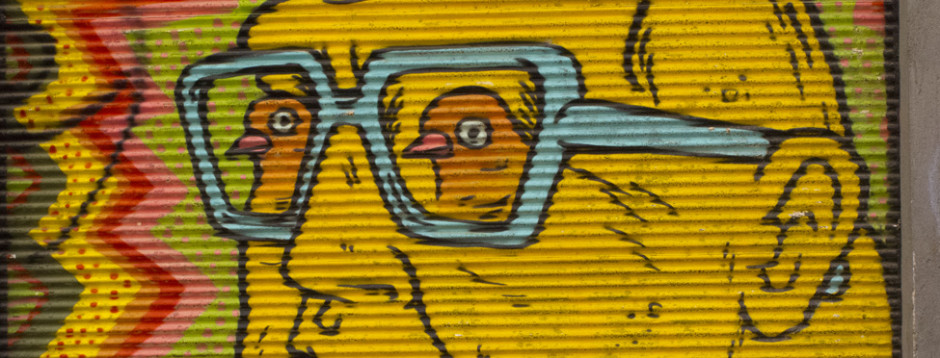Paul J. Karlstrom 19 January 2013
On a recent trip to New York my wife and I managed to see several exhibitions during what was primarily a family Christmas week in Brooklyn. Although we were staying in Chelsea, we saw none of the numerous gallery exhibitions in that trendy neighborhood. Matisse at the Met and Inventing Abstraction at MOMA were by themselves worth the trip from our home in San Francisco. We agreed that they were among the best modern art shows we have seen in a long time.
A third exhibition we visited, the only one in a gallery, in its more modest way was equally compelling and thought-provoking. That wonderful, highly original show was Melissa Stern’s The Talking Cure at Smart Clothes Gallery. On view on the Lower East Side (November 8-December 20), this most engaging multi-media presentation was for us a revelation. The title, of course, invokes Freud’s famous method. Consisting of twelve sculptures and the same number of drawings, writers, and actors, the show was as much a conceptual art piece as a display of objects. Stern had outdone herself in the sophisticated deployment of text, sound, object, and image in what was a visual and aural performance. Each part played its role, further illuminating—or rather suggesting—an artistic vision that is uniquely Stern’s, as those familiar with her productive career will attest.

Ann and I, joined by our daughter, Clea, are no newcomers to Melissa’s ceramic art, having lived with examples for years (full disclosure: we were staying in Melissa’s loft in Chelsea and had the pleasure of seeing the show with the artist). What struck us, or certainly struck me, was the consistency of Melissa’s focused artistic goals along with the sophistication and intellectual rigor she brings to what for many viewers is playful (although frequently ominous) and childlike. Or perhaps like Outsider art, examples of which she has in her quite revealing collection. That is an artful deception, a means to coax viewers to look internally and through individual memory confront a past that deeply informs the present. The “issues” brought out in imagined narrative responses to the sculptures and drawings, and recorded by actors as a kind of Acoustiguide (invoking museum experience), in this case via up-to-date QR code, are both shared and very personal. This is no kiddie art.
Upon returning home I took a look at the small catalogue for Melissa Stern: Back to School, a 2003 exhibition of drawings at the Children’s Museum of the Arts for which I wrote the essay. I was both amazed and quite pleased that what I had to say about Melissa’s work then seemed entirely applicable to the recent exhibition:
“Stern is careful to create images strictly from her own personal experiences and concerns, past and present, and the imaginative equivalents [emphasis new] they suggest to her. The narrative, if there is one, is the secret world of Melissa Stern. What elevates these images to the status of compelling works of art is her willingness [maybe even compulsion] to share her world [to invite us in through her art]. She does so in a calculated and strategic way, through fantastic images intended to create for the viewer the mental and sensory aids that become bridges to the past. Although Stern is loathe to speak directly to [specific] meaning and artistic intention in her work, preferring to allow it to work its magic without interference, it is clear that she is using memory and the past to provide the keys to self-discovery in the present.” 
So I look at both exhibitions and my understanding of Melissa and her art, and I see a child’s discovery of her world through images, words, reading, and looking. The same basic qualities and individuality that distinguish the earlier show are present in The Talking Cure, just more so. Above all, Melissa brings a sly sense of humor and amusement to what is a very adult project: the ongoing effort to understand ourselves. I think Stern’s chosen means to achieve her very grownup and ambitious goals are not just unique but brilliant. I wish The Talking Cure would travel to discover how many others would agree with that statement.
PJK © 1-19-13
Paul Karlstrom is former west coast regional director (1973-2003) of the Smithsonian’s Archives of American Art. He is well-known for his oral histories. His latest book is a biography of art historian Peter Selz, a major player in the story of modern art in New York and California. Peter Selz: Sketches of a Life in Art (California, 2012).


Paul Karlstrom, my brother-in-law, has sent me this essay, and I have immediately seen how valuable the relationship between artist and critic/historian can be.
As I looked at the images, I was immediately intrigued, and I just liked them. I don’t know why, not being very knowledgeable in this matter. They amused me, they interested me, and that last one, “Friends,” in particular touched me. They invite me to spend time with them, but what is going on really? How does this work?
And so in reading what Paul has written, I begin to understand. He explains what is to be seen; why the work is evocative and appealing; why it is unusual, distinguished, and memorable; and what inspires Melissa Stern’s creativity. I feel like a bee whose attraction to a flower has been explained by a botanist. There was much more to this than I thought, and I feel complimented by my response. A very gratifying experience all around, and I do LOVE the art.
Thank you very much, Ellen for your kind and thoughtful response. I appreciate your taking the time to post this.